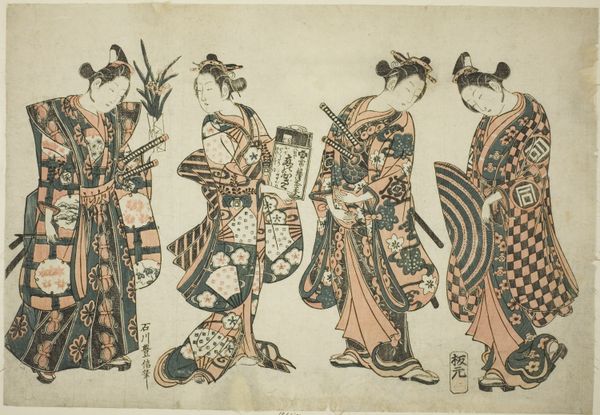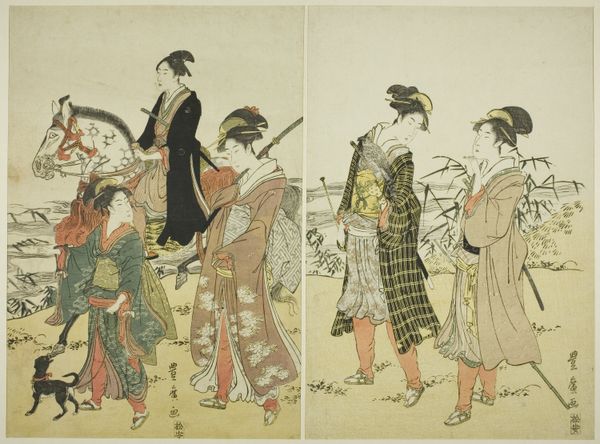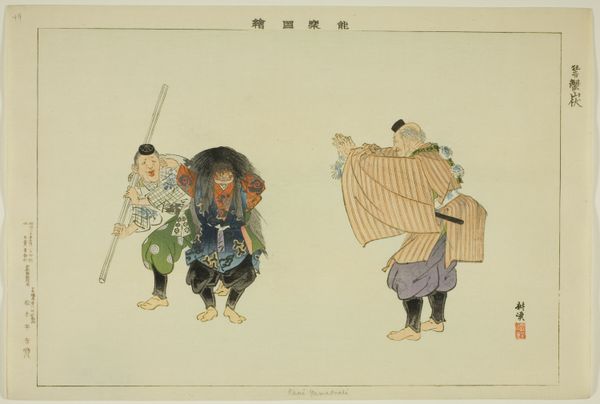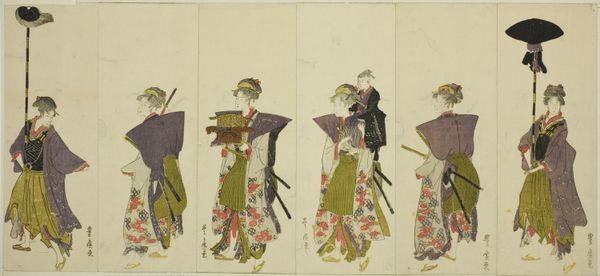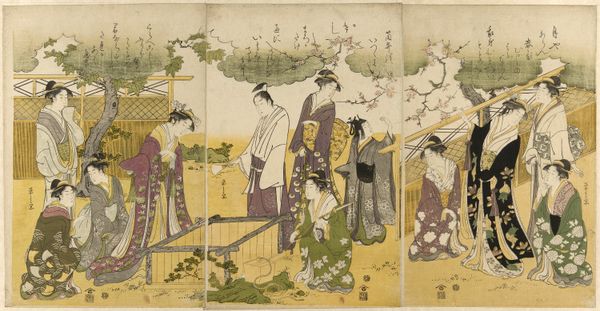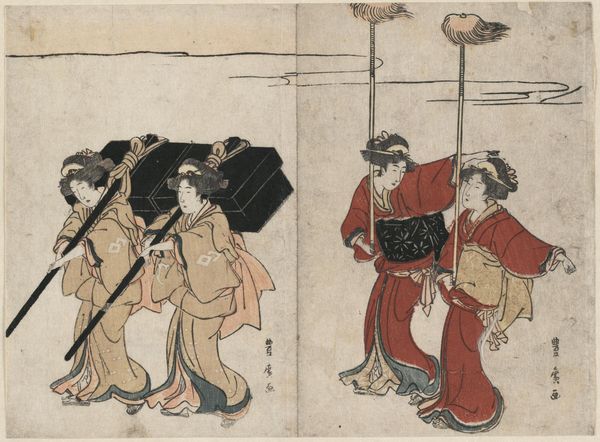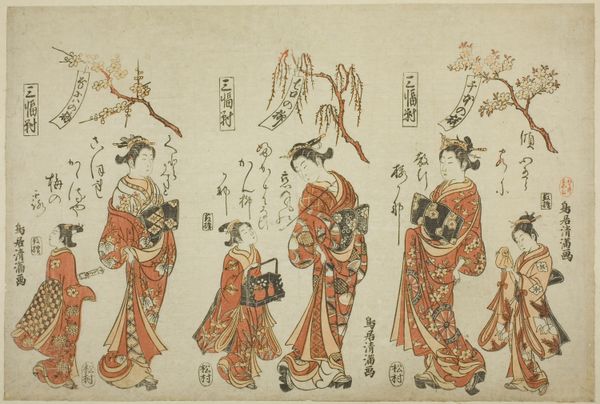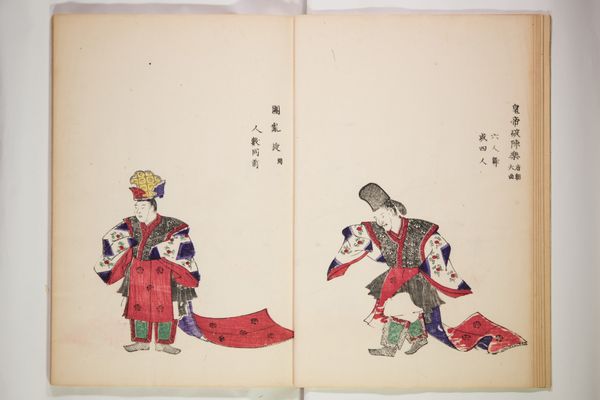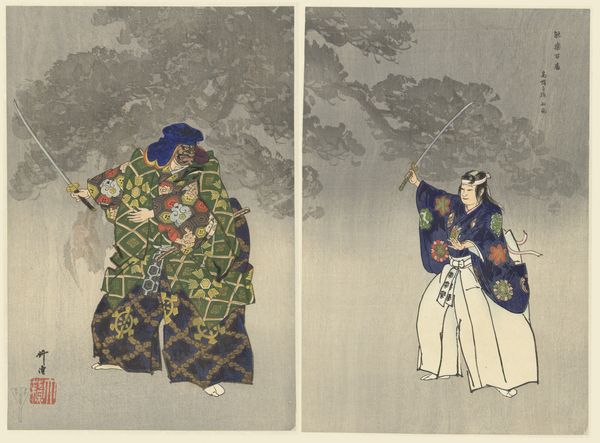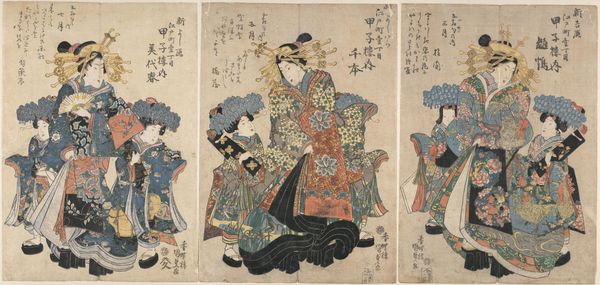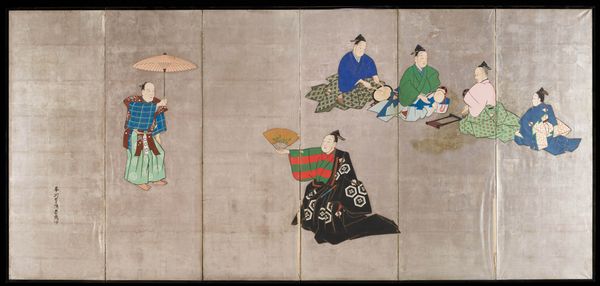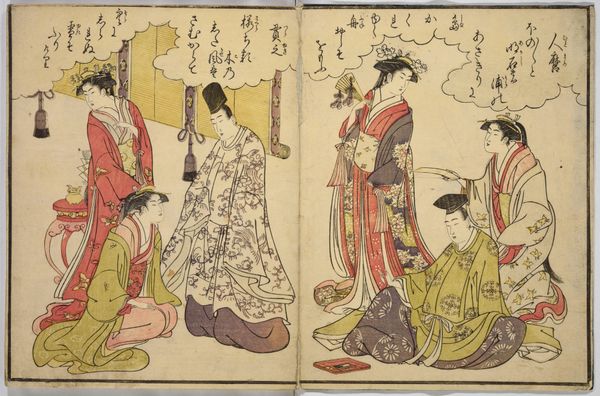
print, woodblock-print
# print
#
asian-art
#
ukiyo-e
#
woodblock-print
Dimensions: Overall 9 1/4 × 40 1/2 in.
Copyright: Public Domain
Curator: Here we have a fascinating woodblock print by Utagawa Toyohiro, created sometime between 1805 and 1807. The piece is aptly titled "Parody of a Daimyo Procession." Editor: The composition is strikingly horizontal. The procession feels rather quiet and subdued, despite the bright pops of color. And something about the figures…they seem oddly familiar. Curator: The appeal here rests heavily on subversion. What appears at first glance to be a typical representation of a feudal lord's entourage is, upon closer inspection, a comical send-up. Toyohiro is engaging with the rigid social hierarchy of Edo-period Japan, gently mocking the powerful daimyo class. Editor: Exactly! It's not just a parade; it's a carefully crafted critique of power dynamics. Looking closer, each member of this supposed procession is female, cross-dressed perhaps to lampoon these displays of wealth and status. Curator: Yes, precisely. Ukiyo-e prints like this circulated among the merchant classes of Edo, who were barred from overt political commentary, allowing for safe commentary. The use of women dressed as men adds another layer of complexity, maybe commenting on gender roles of the era too. Editor: Absolutely, placing them at the heart of this spectacle raises questions. Are they satirizing the masculinity of the samurai, or even subtly celebrating female empowerment? It’s so interesting to consider what was radical and subversive for the time, especially in terms of how societal boundaries were tested. Curator: It's also worth noticing the craftsmanship involved. Woodblock prints required a coordinated effort between artist, carver, and printer, a remarkable feat given the level of detail here. Editor: Agreed. And the muted tones in the faces only amplify the absurdity of these grand black shapes and costumes. Overall, it's a testament to art’s potential for protest. Curator: Indeed. It gives us a valuable window into the socio-political landscape of Edo Japan. Editor: Right. Considering all that has come to light today, this is more than just an aesthetically pleasing image—it's a quiet revolt committed to paper, so long ago.
Comments
No comments
Be the first to comment and join the conversation on the ultimate creative platform.
